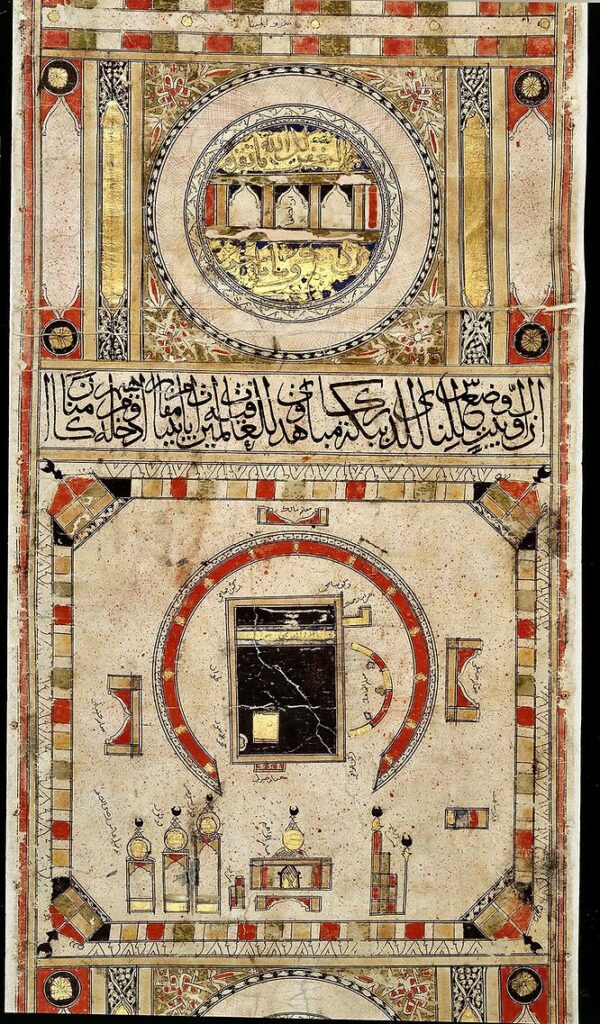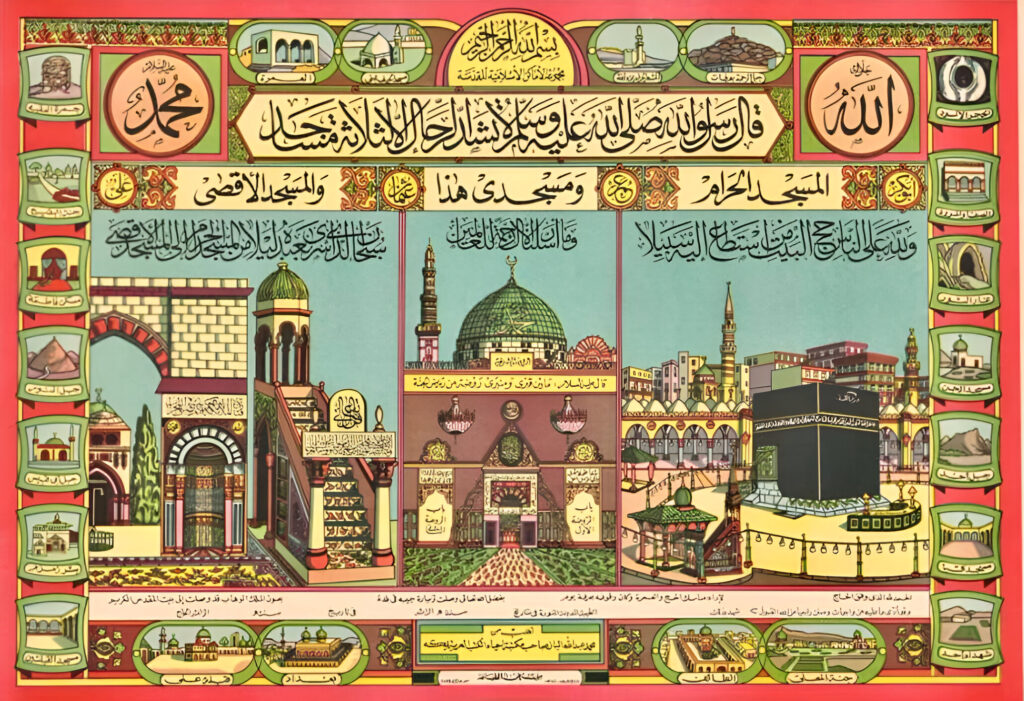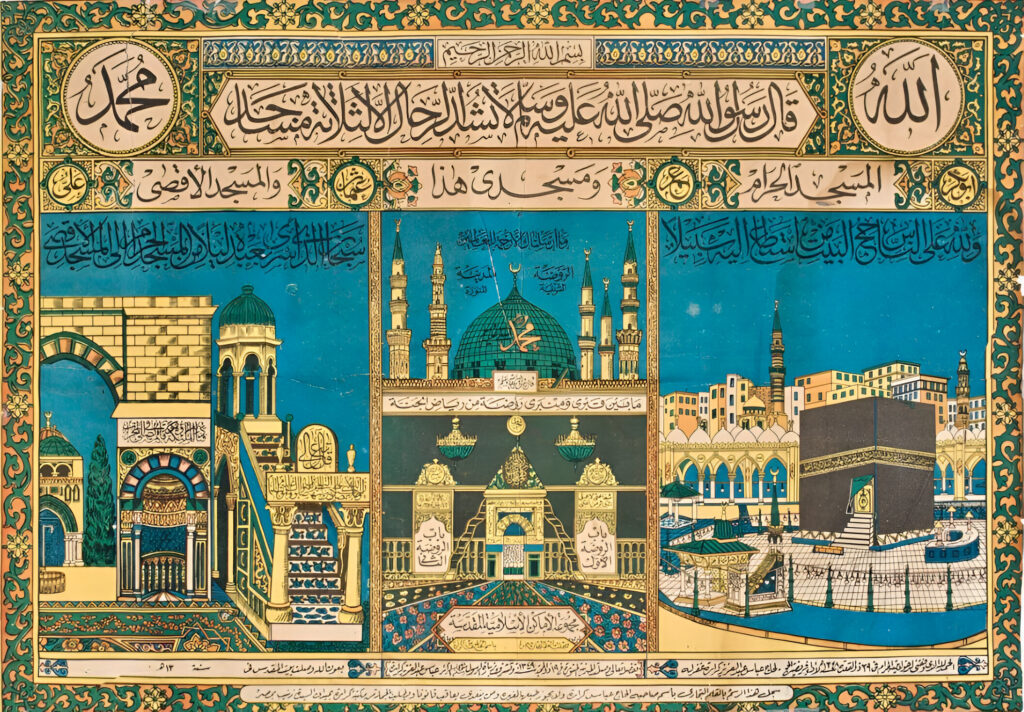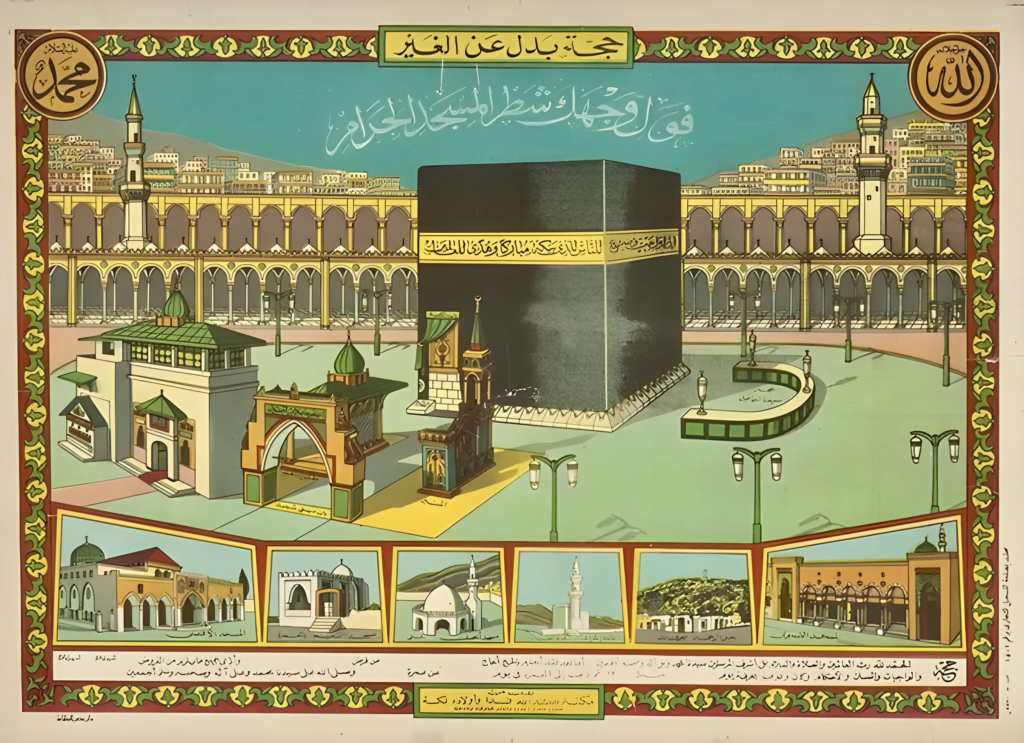Articles
Hajj Certificates: A Beautiful History
Date of publication of the article: 29/05/2024
Year of publication: 2024
Hajj certificates are stylised legal documents testifying that a certain individual has participated in the pilgrimage to Mecca & executed the required rituals. They are known to exist from as early as the 11th century. From the 11th century to the early 20th century, pilgrims could obtain paper Hajj certificates which they would typically display in their homes.

This beautiful 15th century scroll commemorates the Hajj – the pilgrimage to Mecca – by a woman called Maymunah. Illustrated with images of Mecca & other places en route, it is a fascinating document combining religious & geographical information.
By confirming the devotional activities of the pilgrim in the sight of Allah, the Hajj certificates were seen as a source of barakah (blessing)
Three types of Hajj certificates are known: those giving testimony that someone had complete the hajj; those mentioning that a person had performed it on someone’s behalf; and those bearing additional testimony that the grave of the Prophet in Medina had also been visited.

This 15th century illustrated scroll attests that Maymunah, daughter of Muhammad ibn ‘Abd Allah al-Zardali, made the pilgrimage to Mecca and visited the tomb of the Prophet Muhammad in the year 836 AH (1432/1433 CE).


This Hajj certificate dated 1778/AH 1193 belonged to a woman, Bibi Khanum, who paid Sayyid ‘Ali Wali to perform the pilgrimage in her place, perhaps due to poor health. The seal of Sayyid ‘Ali Wali appears below, guaranteeing the completion of Bibi Khanum’s Hajj.
They were used as references for other artistic depictions of the holy sites.
Printed Hajj certificates became popular from the mid-19th century. Over the years, the Hajj certificates became more colourful. Being distributed throughout the Muslim world by returning pilgrims, they were used as references for other artistic depictions of the holy sites.

This scroll belongs to a tradition of illustration that was concerned to represent accurately, and in detail, the Muslim holy places, and the artist has accordingly depicted and labelled each of the tombs and other venerated landmarks.

A certificate for a Hajj pilgrim, showing the Holy Places to be visited, printed by Dar Misr Lil-Tiba’a, Cairo, issued by Abdallah Fada & Sons, Mecca, dated 20th Century. The central section depictsal-Masjid al-Aqsa and al-Masjid al-Haram; Masjid al-Nabawi; and the Ka’ba.

Printed Hajj certificates became popular from the mid-19th century. This is a Library and Printing Press EI-Mashhad EI-Husseini hajj certificate dated 1920, with views of the Kaaba in Mecca, the Mosque in Medina, and the Dome of the Rock in Jerusalem.
Historically, Hajj certificates served as maps & guides to the pilgrimage routes. Later certificates listed the rites that a pilgrim had performed at each location & illustrated the locations in vertical sequence. By confirming the devotional activities of the pilgrim in the sight of Allah, the Hajj certificates were seen as a source of barakah (blessing).


This Egyptian certificate commemorates the Hajj of ‘Abbas Kararah. it is dated 1930 or earlier and in the Khalilli Collections. Cover image: Printed Hajj certificate, 20th century, © Qatar National Library.
Source: Bayt al Fann


